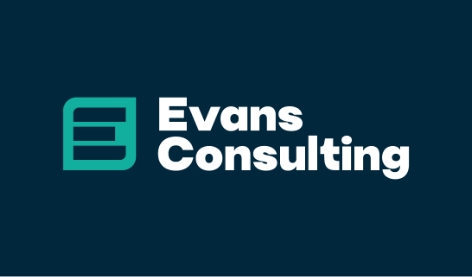Lessons Learned and Pro Tips from Our Journey with Unanet CRM
Our experience with Unanet CRM implementation at Evans Consulting has been nothing short of transformational. To share our lessons and help you accelerate ROI on your CRM investment, we’ve distilled our insights into key takeaways and actionable tips.
Strategic Planning is Non-Negotiable
- Align Strategy and Tools: Our journey taught us the critical lesson of aligning each CRM functionality with our strategic goals right from the outset. This alignment between technology and business objectives is essential for maximizing the benefits of your CRM investment, ensuring that every feature adds value to your overarching strategy.
- Establish Clear Success Metrics: By setting specific, targeted metrics from the beginning, we were able to precisely define what success looks like in our CRM initiatives. These benchmarks served as a guiding light for our team, directing our efforts towards achieving strategic goals with a level of clarity that was previously unattainable. This approach enabled us to monitor our progress effectively and make data-driven decisions.
- Define Your CRM Scope: In our planning phase, taking the time to meticulously define the scope of our CRM—identifying the features we truly needed and would actively use—was instrumental in streamlining our operations. By focusing on the most relevant and impactful functionalities, we sidestepped the trap of overcomplication and ensured our resources were concentrated where they could yield the highest return. This strategic focus on relevance over quantity has been a key factor in our CRM project’s success.
System Integration Requires Detailed Planning
- Understand End-to-End Processes: By conducting a thorough mapping of all business processes, the team was able to gain a comprehensive understanding of how each process would integrate with the new CRM system. This step was crucial in enabling a smooth transition, ensuring that all team members were aligned and understood the workflow changes that would occur.
- Clarify System Environment and Data Flows: Taking the time to detail the path that data would take through the system proved to be instrumental in the project’s success. This involved mapping out how data would be inputted, stored, processed, and retrieved within the new CRM environment. Understanding these data flows in advance was key to ensuring seamless integration and avoiding data bottlenecks.
- Specify Integration Requirements: By defining both the technical and functional requirements for CRM integration well in advance, the project team was able to mitigate potential hurdles that could arise during the integration process. This foresight allowed for better planning and resource allocation, ensuring that the integration could be executed smoothly without any last-minute surprises or delays.
Data Management is Foundational
- Plan Data Conversion Thoroughly: By adopting a strategic approach to data conversion, we were able to guarantee our data’s integrity and availability right from the start. This careful planning involved mapping out each step of the conversion process to ensure no detail was overlooked and that data was accurately transferred without loss or corruption.
- Intentionally Set Permissions: To strike the right balance between functionality, security, and compliance, it was essential to carefully determine user access levels. This meant meticulously defining who could access what data and what actions they could perform within the system, thereby protecting sensitive information while still allowing users the flexibility to perform their tasks efficiently.
- Implement Rigorous Testing: Ensuring the reliability of our CRM system demanded comprehensive testing across multiple stages, including user acceptance testing to confirm the system met the users’ needs and expectations, integration testing to ensure all components worked together seamlessly, and regression testing to detect any unintended impacts from modifications or updates. This thorough testing regimen was critical to guarantee the CRM’s performance and dependability.
User Engagement is Key to Success
- Prepare Users Effectively: By implementing a comprehensive training program, supplemented with detailed user guides and a variety of resources, we set clear expectations and ensured that all users were thoroughly prepared and ready to engage with the system efficiently. This approach helped in enhancing user interaction and overall satisfaction.
Change Management Drives Adoption
- Execute a Change Management Plan: To ensure that users received the necessary support and to maintain business continuity during the transition, a carefully crafted change management strategy was implemented. This strategy focused on systematically managing the change, involving clear communication, training, and support mechanisms to facilitate a smooth transition.
Pro Tips for Amplifying Your Unanet CRM Investment
- Establish a Clear Vision: Begin by crafting a clear and detailed vision for your CRM implementation, one that is intricately linked with your overall business strategy. This step is crucial as it ensures that the entire organization is aligned and moving towards the same goals, thereby facilitating a more cohesive and efficient approach to CRM integration.
- Set Up Clear KPIs: Key performance indicators (KPIs) serve as your guiding lights through the CRM journey. It’s important to not only identify but also clearly define these KPIs. Ensure that your CRM tool is capable of reporting these indicators effectively so that your team can make data-driven decisions that propel your business forward.
- Standardize Understanding Across Teams: Achieving a standardized comprehension of key terms, workflows, and decision-making criteria among all team members is vital for the smooth functioning of your CRM system. It eliminates confusion and streamlines processes, making it easier for teams to collaborate and work efficiently.
- Consistent System Use Across Business Units: Encouraging consistent use of the CRM system across all business units is key to unlocking its full potential. This consistency ensures that every department is leveraging the system in a uniform manner, leading to improved communication, better data integration, and a unified approach to customer relationship management.
- Prioritize Data Quality: The foundation of any reliable CRM system is high-quality data. Prioritizing the accuracy and relevance of the data entered into your CRM not only reflects the true state of your business but also ensures that the insights and analyses derived from this data are trustworthy. This, in turn, enables more informed and strategic decision-making.
- Support Your Growth Teams: The implementation phase can be particularly taxing for Growth Teams as they navigate the challenges of integrating new systems while striving to drive business growth. Providing these teams with the necessary support and resources during this time can alleviate their burden and allow them to focus on their primary objective of growing the business.
Through strategic planning, detailed system integration, rigorous data management, deliberate user engagement, and effective change management, we’ve not only implemented Unanet CRM but transformed our operational blueprint. These lessons and pro tips are not just a roadmap to successful CRM implementation but a guide to realizing its full benefits. At Evans Consulting, we’re passionate about sharing our knowledge to help you achieve accelerated ROI and ultimate success in your GovCon business ventures. Check out this resource on best practices pre-implementation and during implementation of your CRM: CRM Implementation Best Practices







